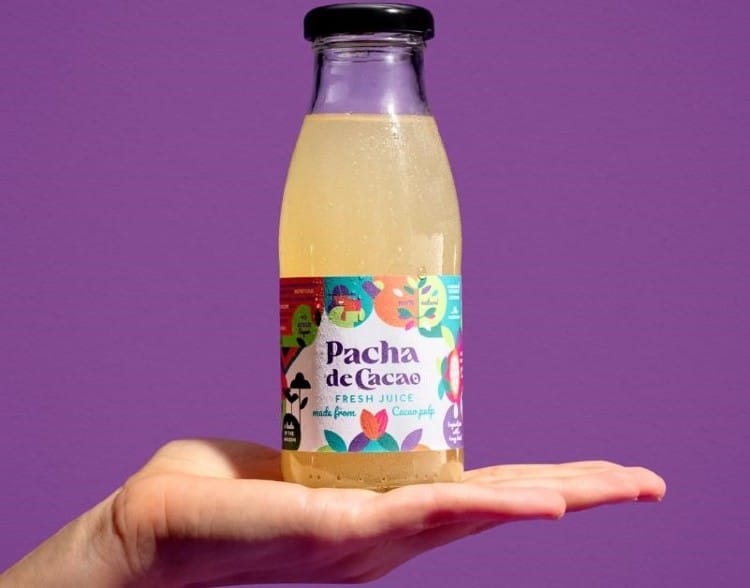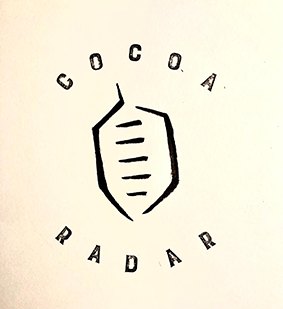Recognising the untapped potential of these underutilised parts of the cocoa fruit (pulp, placenta, and pod husk), Nestlé's R&D experts in York have developed a patented technique that leverages all parts of the fruit inside the cocoa pod.
In what they describe as a simplified method, everything inside the pod is collected as a wet mass, which ferments naturally, unlocking the key chocolate flavour. The mass is then ground, roasted and dried into chocolate flakes which can be used to make chocolate without compromising the taste.
This approach not only minimises waste but also helps farmers obtain a higher yield and greater value from their cocoa harvests.
Traditionally, chocolate is made using only the cocoa beans that are extracted from inside the cocoa pod. The beans are harvested, fermented, dried, roasted, and then ground into a liquor, which is used to make chocolate. However, a significant amount of cocoa fruit, including the pulp, placenta, and pod husk, remains largely unused.
Louise Barrett, Head of the Nestlé Research and Development Centre for Confectionery in York, UK, says: "With climate change increasingly affecting cocoa yields around the world, we are exploring innovative solutions that could help cocoa farmers maximise the potential of their harvests. This groundbreaking technique utilises more of the fruit, while enabling us to provide delicious chocolate to our consumers. While this project is still at a pilot stage, we are currently exploring how to apply this innovation at a larger scale."
Nestlé is not the first to explore this innovative technique, which has the potential to increase the amount of cocoa material available to farmers and also to free up valuable time for them.
With more efficient cocoa extraction, farmers could have more time to focus on good agricultural practices such as pruning, which has been demonstrated to improve yields.
Using the whole cocoa pod: who else is doing it - and how?

Barry Callebaut / Cacao Barry / Cabosse Naturals
WholeFruit chocolate / Evocao: Chocolate made from beans and fresh cacaofruit pulp (less added sugar, ‘from the fruit itself’). Now supplied to chefs and artisans.
Cabosse Naturals (BC ingredients arm): Upcycles juice, pulp, powder and concentrates; ingredients are Upcycled Certified, enabling brands to claim verified waste reduction on pack.
- Farmer impact: Cabosse estimates pulp sales can increase farmers’ income by ~10% (early programmes).
Koa (Ghana/Switzerland) – cocoa‑fruit juice & chocolate sweetening alliances
- Installs solar‑powered community mobile pressing units to collect and cool pulp/juice on farm, even in remote areas; beans go back to the farmer for normal fermentation.
- Supplies ingredients for Lindt EXCELLENCE Cocoa Pure (100% cocoa fruit, no refined sugar) and Valrhona’s Oabika 72°Brix cocoa‑fruit concentrate for chefs.
- Income effect: IDH reports up to GHS 3,500 (~US$280) extra per ton of dried beans via pulp sales in 2023/24; Koa’s second factory aims to reach ~10,000 farmers.
- Ecosystem: Koa ingredients appear in Kumasi Drinks (NL) and other products.
Valrhona + Koa — Oabika
- A chef‑grade cocoa‑fruit juice concentrate (72°Brix) made from mucilage; used in patisserie, ice cream, and to sweeten/season chocolate while valorising pulp.
Lindt & Sprüngli — Excellence Cocoa Pure
- Limited bars sweetened with cocoa pulp instead of refined sugar, developed with Koa ingredients.
Mondelēz SnackFutures — CaPao
- Upcycled snacks that rescue pulp/juice (often via Cabosse ingredients), building consumer awareness of cacao‑fruit as a food in its own right. 
Ritter Sport — Cacao y Nada
- A bar sweetened only with cocoa‑fruit juice (100% cocoa fruit ingredients). It even triggered a German labelling tussle (no refined sugar = not 'chocolate' under the old rule), underscoring the need for regulatory change.
Blue Stripes (US) — “Whole Cacao” brand
- Makes cacao water (from pulp), shell flour (from husk), whole‑cacao snacks/bars; backed by investors incl. Hershey & Whole Foods to scale whole‑pod upcycling.
Kumasi Drinks (NL)
- Bottles cocoa‑fruit juice sourced through Ghana partners; communicates extra income for farmers and has public development‑finance support.  
Pacha de Cacao (NL)
- Bottles a 100% natural and fresh cacao juice, full of nutrients and vitamins, made from cacao fruit in Ecuador.
Red Tape and Further Research
- Policy: The EU’s 2020 decision recognised cocoa pulp/juice as a traditional food, streamlining its use in foods/chocolate. Expect more countries to clarify their standards (e.g., what constitutes 'chocolate' if sweetened only with cocoa fruit).
- Certification/claims: Upcycled Certified gives brands a credible way to communicate waste reduction; Cabosse and CaPao already use it.
- Food science: Growing literature on pectin extraction from husk expands options (gels, jams, confectionery textures), adding value to material once discarded.
- Agronomy hygiene: Whole‑pod strategies should include safe husk management (composting/pyrolysis) to avoid spreading black pod.
- From the Desk of CocoaRadar is the official media partner ECA 9th European Cocoa Forum.
- 'From Our Desk. To Yours. Daily.'
- Sign-up here for free and upgrade to an annual plan.

